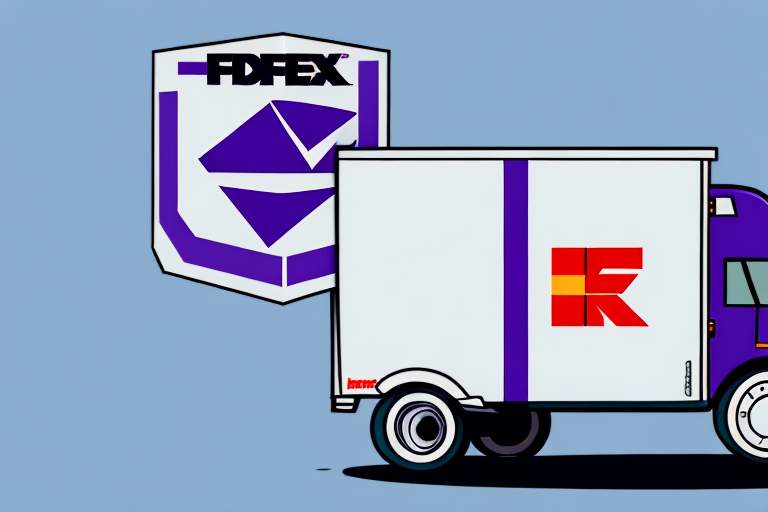Understanding the Common Abbreviations Used by FedEx
When it comes to shipping, FedEx is one of the most prominent and reliable companies in the industry. However, if you’re new to shipping with FedEx, you may encounter various abbreviations that can be confusing. This article breaks down the most common FedEx abbreviations, explains their meanings, and provides tips for decoding and utilizing them effectively to enhance your shipping experience.
What Are FedEx Abbreviations and Why Are They Important?
FedEx employs a range of abbreviations to efficiently communicate essential information about shipping and tracking packages. These abbreviations streamline the shipping process, ensuring timely and accurate delivery. Understanding these abbreviations is crucial for avoiding misunderstandings and ensuring that your shipments are handled correctly.
Benefits of Using Abbreviations in Shipping
- Efficiency: Abbreviations simplify communication, reducing the time needed to process information.
- Clarity: They provide clear instructions and statuses, minimizing the risk of errors.
- Standardization: Consistent use of abbreviations ensures uniform understanding across different regions and departments.
Most Common FedEx Abbreviations Explained
Below are some of the most frequently used FedEx abbreviations, along with their meanings and implications:
- COD - Cash on Delivery: Payment is collected upon delivery of the package.
- POD - Proof of Delivery: Confirmation that the recipient has received the package, typically through a signature.
- RMA - Return Merchandise Authorization: A process allowing the return of products under certain conditions.
- AWB - Airway Bill: A document issued by the carrier detailing the shipment contents and serving as a tracking number.
- ETA - Estimated Time of Arrival: The projected date and time when the package is expected to reach its destination.
- HS - Harmonized System: A standardized system for classifying traded products internationally.
- CN22 - Customs Declaration Form: A form required for international shipments, detailing the contents and value of the package.
Decoding FedEx Abbreviations on Packages and Labels
Understanding the abbreviations on your FedEx package or label can help you track your shipment more effectively and ensure it meets all necessary requirements. Here are some tips to decode these abbreviations:
- POD - Indicates that a recipient's signature is required upon delivery.
- COD - Specifies that payment must be made at the time of delivery.
- HS - Used for identifying the classification of goods in international shipping.
For detailed information, refer to the FedEx Abbreviations Guide.
FedEx Terminal Codes and Their Significance
FedEx uses specific terminal codes to identify locations within its extensive network. These codes are essential for tracking and managing shipments effectively. Here are some common terminal codes:
- FWC - FedEx World Service Center in London
- HKG - Hong Kong International FedEx Terminal
- DFW - Dallas/Fort Worth International Airport, a major hub for FedEx
Understanding these codes can help you pinpoint the exact location of your shipment within the FedEx network.
Using FedEx Abbreviations to Expedite Shipments
Properly utilizing FedEx abbreviations can streamline your shipping process and ensure faster delivery times. Here are some strategies:
- Accurate Documentation: Use the correct abbreviations on shipping labels and documentation to prevent delays.
- Industry-Specific Knowledge: Familiarize yourself with abbreviations relevant to your industry to enhance communication with FedEx.
- Customer Service: If uncertain about an abbreviation, contact FedEx Customer Service for clarification.
Avoiding Confusion with FedEx Abbreviations
While abbreviations are useful, misuse or misunderstanding can lead to shipment delays or errors. Follow these tips to avoid confusion:
- Consistency: Use abbreviations consistently across all shipping documents.
- Verification: Double-check abbreviations with official FedEx resources or customer service.
- Training: Ensure that all team members involved in shipping are familiar with common FedEx abbreviations.
International Shipping: Comprehensive List of FedEx Abbreviations
International shipments often involve additional abbreviations related to customs and import/export regulations. Here are some essential ones:
- CN22 - Standard customs declaration form for items valued below a certain threshold.
- HS - Harmonized System code used for classifying goods in international trade.
- DUTY - Custom Duty fees that may apply to your shipment.
- VAT - Value Added Tax applicable in many countries for imported goods.
For more details on international shipping requirements, refer to the FedEx International Shipping Guide.
The Evolution of FedEx Abbreviations with Technological Advancements
Advancements in technology have significantly influenced the evolution of FedEx abbreviations. Here’s how:
- Real-Time Tracking: Technologies like RFID and GPS have introduced abbreviations related to real-time tracking statuses.
- Automated Systems: The use of AI and machine learning in sorting and logistics has led to new abbreviations for automated processes.
- E-Commerce Growth: The rise of online shopping has spawned abbreviations related to expedited shipping and high-volume processing.
Staying updated with these changes ensures that you can leverage the latest FedEx services effectively.
Conclusion: Mastering FedEx Abbreviations for Efficient Shipping
Understanding and correctly using FedEx abbreviations is essential for efficient and effective shipping. By familiarizing yourself with these terms, you can enhance your shipping processes, ensure timely deliveries, and reduce the risk of errors. Always refer to official FedEx resources or contact customer service for the most accurate and up-to-date information.






















